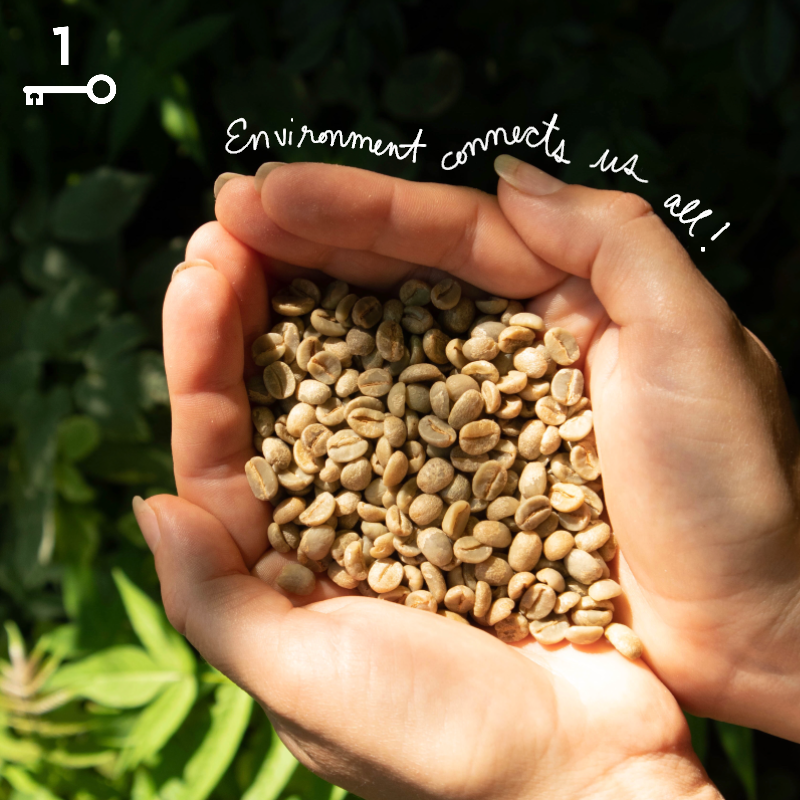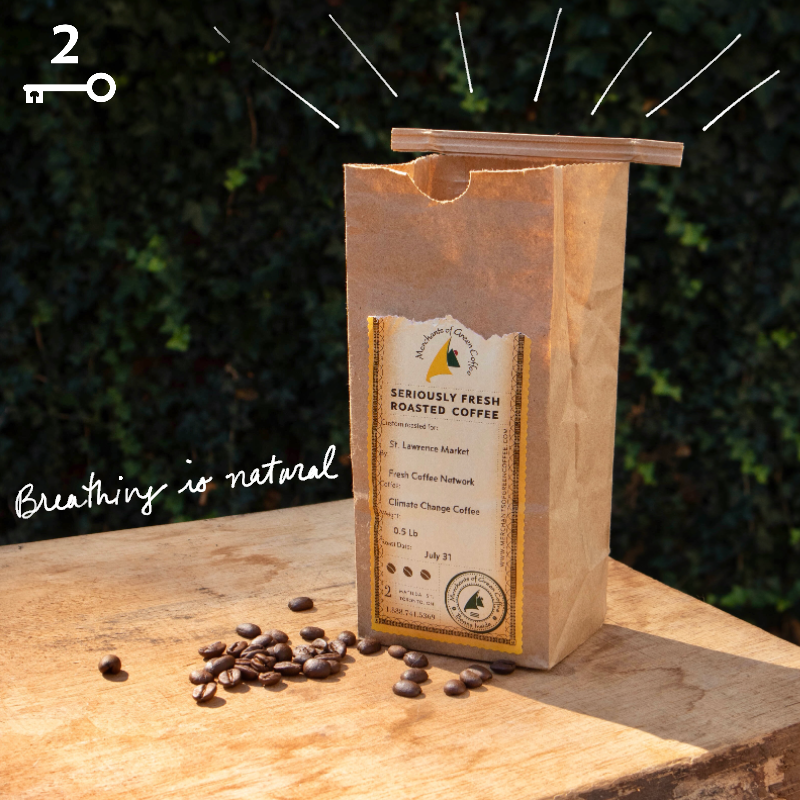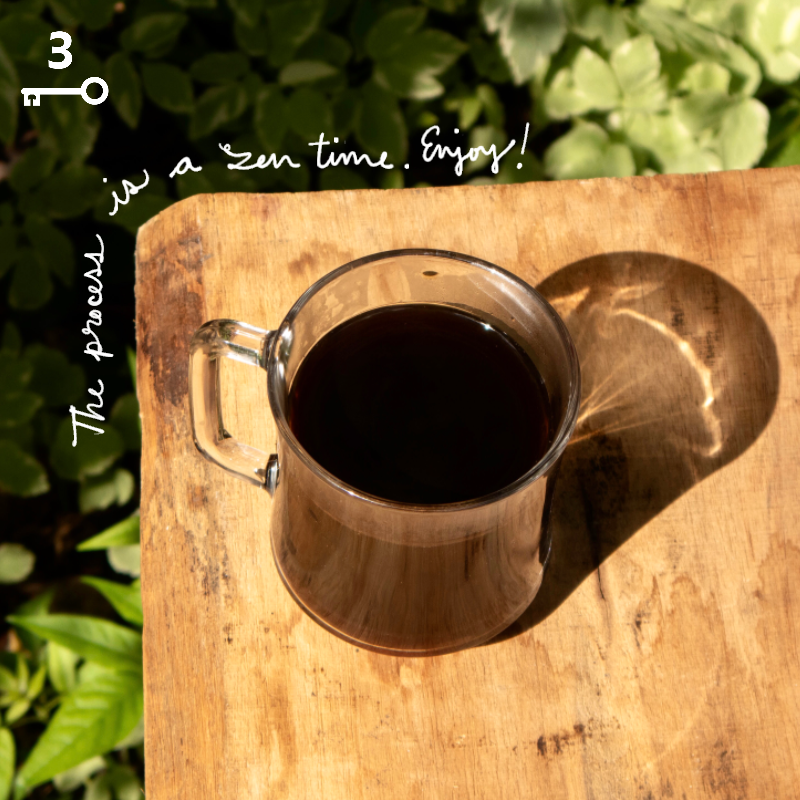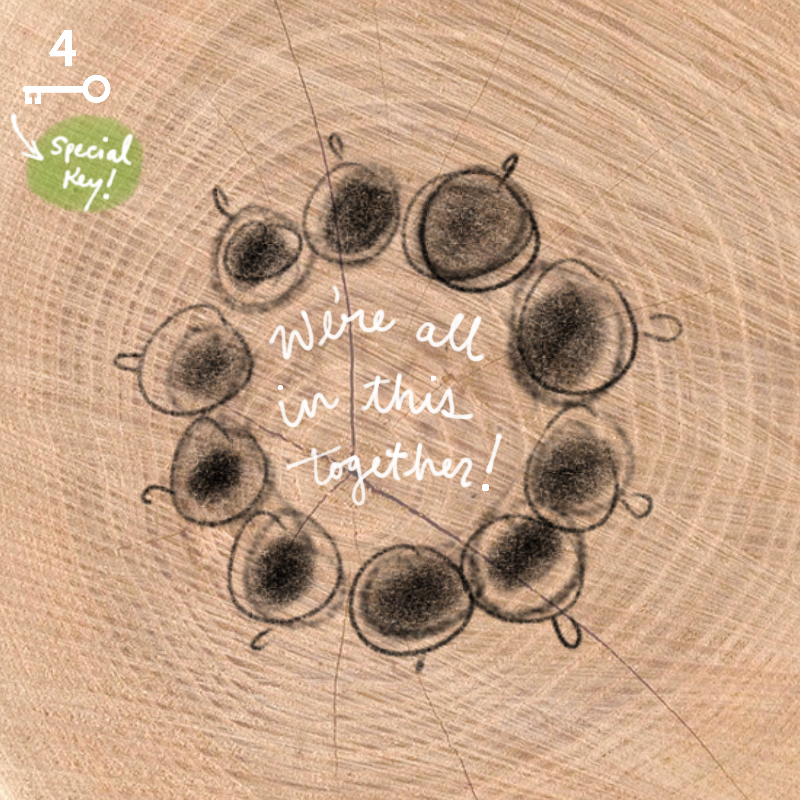
Why 3 Keys?
The 3 Keys to the Best Tasting Coffee is one of our most foundational pieces of coffee education since it defines what it takes to make the best possible cups. It also boils down the core lessons behind the lesser-known education we’ve been teaching in our coffee school for the past 2 decades.
These 3 keys are irrefutable coffee facts, grouped together and defined so any cup that properly passes through each of them can be objectively considered to be one of the best-tasting cups possible. And the best part? Anyone can choose to take control of their coffee quality after learning these keys. Taking the time to become aware is the first step in changing our habits so they are better for us and for nature.
Key #1: Quality Green Beans
Quality Green Beans is about honouring nature.
It’s about sourcing green coffee beans that are grown with care as close to real, biodiverse nature as possible. The best coffees are grown at high altitudes in the shade of other trees within an ecologically diverse forest. High elevation coffees are naturally better tasting because coffee trees grown at high elevations concentrate more sugars in their beans, which give them a naturally sweeter flavour. Coffee trees grown in healthy forests also benefit from nutrient-rich soil and environmental diversity, both of which work to protect the plants and improve their growth and resilience.

Quality green coffee beans are also defined by consistent, ecologically sustainable processing, as well as careful sorting and selection. Certifications, such as Fair Trade & Organic, add another layer of quality because third-party verification acts as an ecological and financial incentive to growers for producing better quality coffee at one end of the supply chain and proves consumer support for better products at the other end.
Key #2: Freshness of the Roast
Freshness of the Roast is about learning from nature rather than attempting to control it.
Once roasted, coffee beans begin to oxidize (a staling process that lasts 5-7 days) so freshness of the roast is about capturing the best and sweetest natural flavours locked within the green beans by consuming the roasted version within 5-7 days from the date of roasting. No form of consumer packaging today can properly preserve coffee’s freshness once roasted, so those with a true understanding of the natural process of coffee oxidation know that trying is futile.

In short, coffee (like bread), has a short shelf life. It oxidizes! It’s twice as complex as the finest red wine and just as volatile. The oxidation period for coffee is just 5-7 days from the date of roasting. Therefore, roasted coffee must be consumed within 5 days of roasting to be considered truly fresh, and ground just before brewing. Fresh roasted coffee, consumed within 3 days of roasting is dramatically superior in taste to any other and this is because quality beans are naturally sweet and lively tasting.
Coffee Fact: Truly fresh coffee is also better for human health! This is due to the fact that fresh beans that have not had the chance to oxidize contain antioxidants (which are volatile and disappear rapidly as the coffee stales). Truly fresh-roasted coffee also tastes so good that many people find they can eliminate cream and/or sugar from their daily morning routine.
Key #3: Proper Brewing
Proper Brewing is about being present in the moment.
It’s about taking time to learn about the brewing process and practising conscious brewing in order to extract the best and maximum flavour from freshly roasted coffee beans.

Coffee School Lesson: In order to extract the full spectrum of flavour, proper brewing requires pure and clean water at a temperature of 195-205°F (just off the boil). Grinds should extract (“steep” or come in contact with the hot water) for anywhere from 1-3 minutes depending on the grind size. For maximum freshness, a fresh brewed cup should be consumed within 10 minutes of brewing in order to fully experience the volatile flavours and aromas. (We recommend starting with 10g of whole coffee beans per 8oz cup. Then, adjust the ratios based on your personal brew strength preferences)
Proper brewing is also about being a conservationist, practising low footprint brewing and taking care to extract as much flavour from the grinds as possible, not stranding or wasting any grinds.
Key #4: Good Company (Special Key!)
Good Company is about recognizing that we need one another in order to survive and thrive.
It’s about paying tribute to the fact that the roots of coffee culture (Ethiopia) made it a special ceremony that was shared in the company of friends, family and people we care about. Today, coffee is a global product shared between all cultures and has the potential to connect us in a deeper way. People sharing good coffee with the people they care for has the power to spark a chain reaction of positive global change.

Good Company is also about how good companies around the world need to align in order to make coffee better now and in the future.
And, because we all know how busy life can be … if drinking cups alone, Good Company can be interpreted as choosing a good company to buy beans from, setting a clear intention for the day, taking action on something meaningful that benefits others … you get the idea! Cheers to a future with better coffee ☕️🌿
